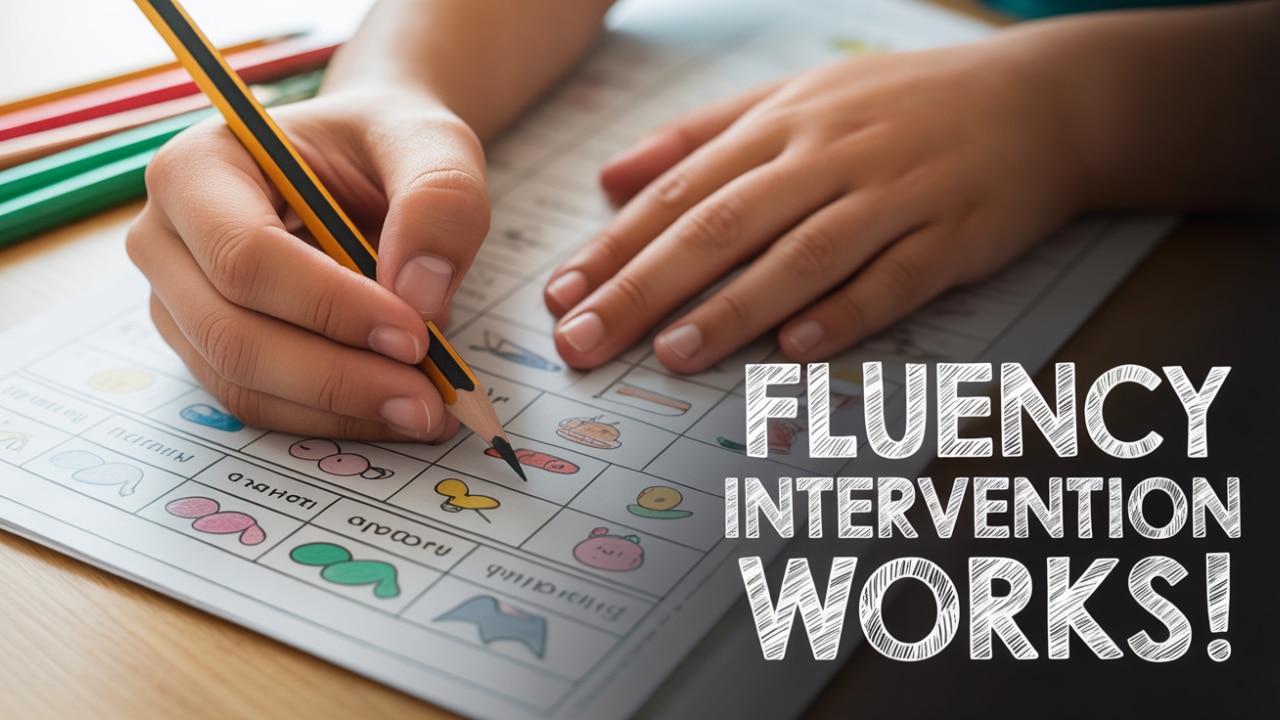Intervention Fluency
Intervention fluency is the ability to apply targeted strategies that help students improve reading, vocabulary, and comprehension at an effective pace. Teachers use research-based methods to help students reach goals in literacy, mathematics, and behavior. By focusing on skills like automaticity, prosody, and word recognition, schools can create measurable gains in learning.

Understanding Intervention Fluency
Intervention fluency combines knowledge of reading, psychology, and education with structured strategies to support student success. A teacher identifies areas where a student struggles, such as phonics, sight word recognition, or sentence structure. The goal is to create lessons that improve both accuracy and speed while maintaining understanding.
Key Components of Intervention Fluency
Effective intervention fluency includes phonemic awareness, phonological awareness, and vocabulary development. Students must learn how to decode a phoneme, use proper punctuation, and read with correct intonation and prosody. These skills work together to improve reading comprehension and silent reading performance.
The Role of Research in Intervention Fluency
Research in education shows that fluency improves when instruction targets both speed and accuracy. Studies highlight the importance of direct instruction, corrective feedback, and goal setting. Teachers use data from words per minute assessments and error analysis to adjust the curriculum for each student.
Evidence-Based Practices
Response to intervention (RTI) frameworks help schools identify which students need extra support. Interventions may include reading aloud, timed practice, and literature-based discussions. Using poetry, paragraph reading, and sentence analysis helps develop prosody and comprehension.
Vocabulary and Literacy Development
Vocabulary growth is critical for reading comprehension and overall literacy. Teachers use explicit teaching of sight words, spelling, and phonics to build strong reading foundations. This supports not only reading skills but also student performance in mathematics and other subjects.
Using Feedback to Enhance Learning
Corrective feedback allows students to recognize and fix errors quickly. Feedback may involve prompting the student to reread a phrase, identify a missing word, or correct a spelling mistake. Expert teachers understand how to balance encouragement with necessary corrections.
Improving Word Recognition and Automaticity
Automaticity refers to the ability to recognize words instantly without stopping to decode them. This skill reduces cognitive load and frees memory for understanding meaning. Teachers use repeated readings, sight word practice, and phrase drills to build automaticity.
Measuring Words Per Minute
Tracking words per minute gives teachers a clear measure of fluency growth. Kindergarten and special education programs often use this method to assess progress. By comparing results over time, schools can determine if an intervention is effective.
Building Prosody and Intonation
Prosody includes the rhythm, pitch, and intonation of reading. It makes reading sound natural and improves engagement with literature. Using poetry and dramatic reading exercises can help students develop expressive reading that improves understanding.
The Link Between Syntax and Comprehension
Syntax, or sentence structure, affects how easily students can understand a text. Teachers help students practice building sentences with correct punctuation and grammar. This increases their ability to follow the meaning of longer paragraphs and complex information.
Intervention Fluency in Mathematics
While often discussed in reading contexts, intervention fluency applies to mathematics as well. Rapid recall of math facts and understanding of mathematical vocabulary supports problem-solving. Teachers use strategies similar to reading fluency, such as timed drills, feedback, and goal setting.

Cross-Subject Benefits
Strong literacy skills support learning across subjects. Improved reading comprehension helps students understand math problems, science information, and social studies literature. Intervention fluency provides a foundation for lifelong learning.
The Role of Phonics and Phonemic Awareness
Phonics instruction teaches the relationship between letters and sounds. Phonemic awareness focuses on hearing and manipulating the smallest units of sound in words. Both are essential for decoding and spelling, especially in early education and special education programs.
Teaching Strategies for Phonics
Direct instruction in phonics includes teaching students to break down a word into its phonemes and blend them together. Teachers may use visual aids, hands-on activities, and interactive reading to reinforce skills.
Goal Setting in Intervention Fluency
Setting clear goals motivates students to improve their skills. Goals might involve increasing words per minute, reducing reading errors, or mastering a list of sight words. Teachers and students can track progress together, creating a sense of accomplishment.
Motivation Through Measurable Progress
When students see improvement, they gain confidence. Celebrating small achievements in fluency helps maintain momentum. Feedback and recognition encourage continued effort.
Silent Reading and Reading Comprehension
Silent reading allows students to focus on comprehension without the pressure of speaking aloud. Teachers use comprehension questions, paragraph summaries, and vocabulary checks to measure understanding. This skill is especially important for older students who must read independently.
Balancing Speed and Understanding
Reading too quickly can cause comprehension errors, while reading too slowly can affect engagement. The right balance allows students to process information effectively. Intervention fluency training helps find this balance.
The Importance of Punctuation and Prosody
Punctuation affects how a sentence is read and understood. Correct use of pauses, emphasis, and intonation guides comprehension. Teachers incorporate punctuation awareness into prosody training.
Using Literature and Poetry
Poetry provides opportunities to practice rhythm and expression. Literature discussions encourage students to think critically about meaning, character behavior, and themes. This supports both literacy and overall academic growth.
Special Education and Intervention Fluency
Special education programs often focus heavily on intervention fluency to address specific learning challenges. Teachers adapt instruction to each student’s needs, whether in reading, vocabulary, or mathematics.
Individualized Support
Students may receive one-on-one tutoring, small group sessions, or technology-based interventions. These targeted approaches build essential skills while addressing individual goals.
Kindergarten and Early Education
Kindergarten is a critical time for developing phonological awareness, phonemic awareness, and early vocabulary. Teachers introduce students to sight words, sentence structure, and basic spelling. Early intervention sets a foundation for long-term success.
Early Assessment Tools
Assessing fluency in the first years of school helps teachers determine which students need additional support. Early corrective feedback prevents long-term literacy struggles.
The Role of Direct Instruction
Direct instruction is one of the most effective ways to teach fluency. It involves clear explanations, guided practice, and immediate feedback. This approach works well for both reading and mathematics intervention.
Benefits of Explicit Teaching
Explicit teaching ensures students understand each skill before moving on. Breaking lessons into small, manageable steps helps maintain focus and build mastery.
Response to Intervention in Schools
Response to intervention provides a framework for identifying and supporting students who need extra help. Teachers use data to determine whether interventions are effective. Adjustments are made based on student progress.
Tiered Support Systems
RTI often includes multiple levels of support, from classroom interventions to specialized instruction. This ensures all students receive the help they need.
Using Feedback Effectively
Feedback is more than pointing out errors—it involves guiding the student toward the correct answer. Prompt, specific feedback helps students correct mistakes quickly.
Encouraging Self-Correction
Teaching students to monitor their own reading and correct errors builds independence. This skill improves both fluency and comprehension.
Building Long-Term Literacy Skills
Intervention fluency aims to create lifelong readers and learners. By focusing on reading comprehension, vocabulary, and automaticity, students can achieve academic success.
Lifelong Impact of Strong Fluency
Students who master fluency are better equipped for higher education, employment, and everyday reading tasks. Fluency supports overall communication and learning skills.
Tier 3 Interventions in Education
Tier 3 interventions provide the most intensive level of support within the response to intervention framework. A teacher works closely with students who show significant gaps in reading, mathematics, vocabulary, or behavior despite Tier 1 and Tier 2 support. This level often includes one-on-one direct instruction, frequent corrective feedback, and highly individualized goals.
Students in Tier 3 may work on phonics, sight word recognition, or sentence structure daily. Progress is tracked using words per minute scores, reading comprehension assessments, and targeted skill checklists. Special education services are often involved to ensure the curriculum is adapted to each student’s needs.
Steps Beyond Tier 3 for Persistent Challenges
When a student continues to struggle beyond Tier 3, schools must explore additional steps. This may involve comprehensive evaluation for learning disabilities, language processing issues, or emotional and behavioral disorders. Teachers, school psychologists, and parents collaborate to determine the most effective path forward.
Interventions beyond Tier 3 can include alternative education programs, specialized therapy, or placement in smaller classroom environments. The goal is to provide a structure where the student can succeed while addressing the root cause of their difficulties in mental health interventions, mathematics, or behavior.
Drugs, Alcohol, Mental Health, and Dual Diagnosis
Substance abuse can have a serious impact on fluency, reading comprehension, and overall academic performance. Drugs and alcohol can impair memory, focus, and automaticity, making it harder for students to meet curriculum goals. Mental health conditions such as anxiety disorder, depression, or bipolar disorder can further complicate progress.

A dual diagnosis occurs when a person has both a substance use disorder and a mental health disorder. These situations require coordinated support between education, therapy, and health care providers. Intervention fluency strategies may still be applied, but they must be paired with treatment that addresses the psychological and behavioral challenges caused by addiction.
How Addiction Interventions Can Help
Addiction Interventions offers structured support for individuals and families struggling with drugs, alcohol, and co-occurring mental health disorders. Our approach combines expert knowledge in psychology, behavior change, and education to help clients regain focus, memory, and learning skills.
We provide interventions that guide people toward treatment while addressing barriers such as denial, fear, and lack of understanding. By connecting clients with the right therapy, rehabilitation, and mental health services, we help restore the skills and confidence needed to succeed in school, work, and life.

